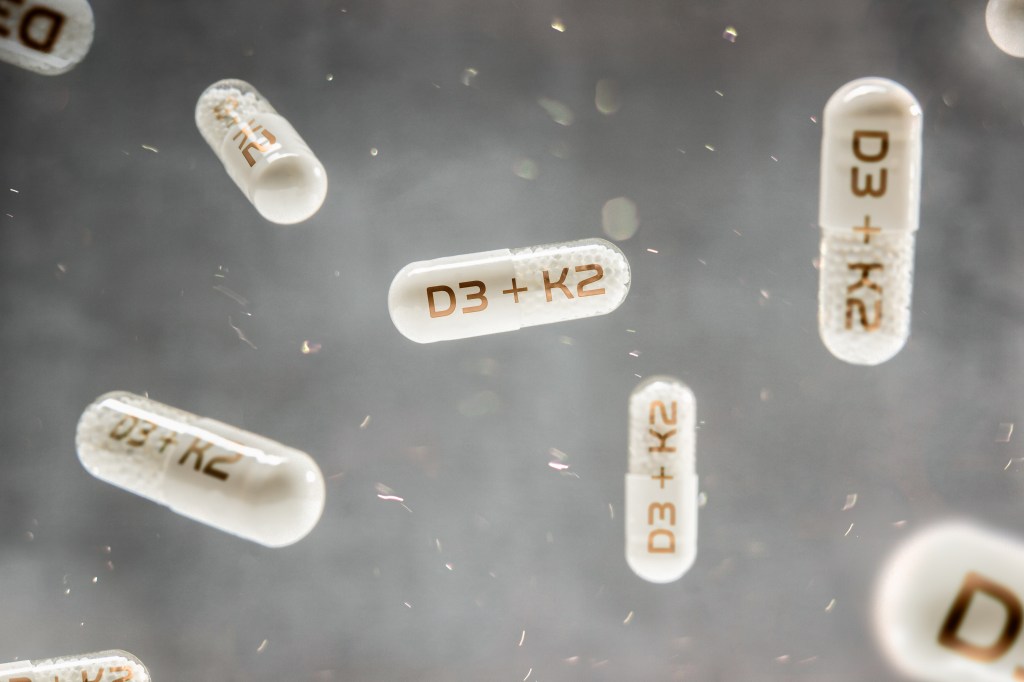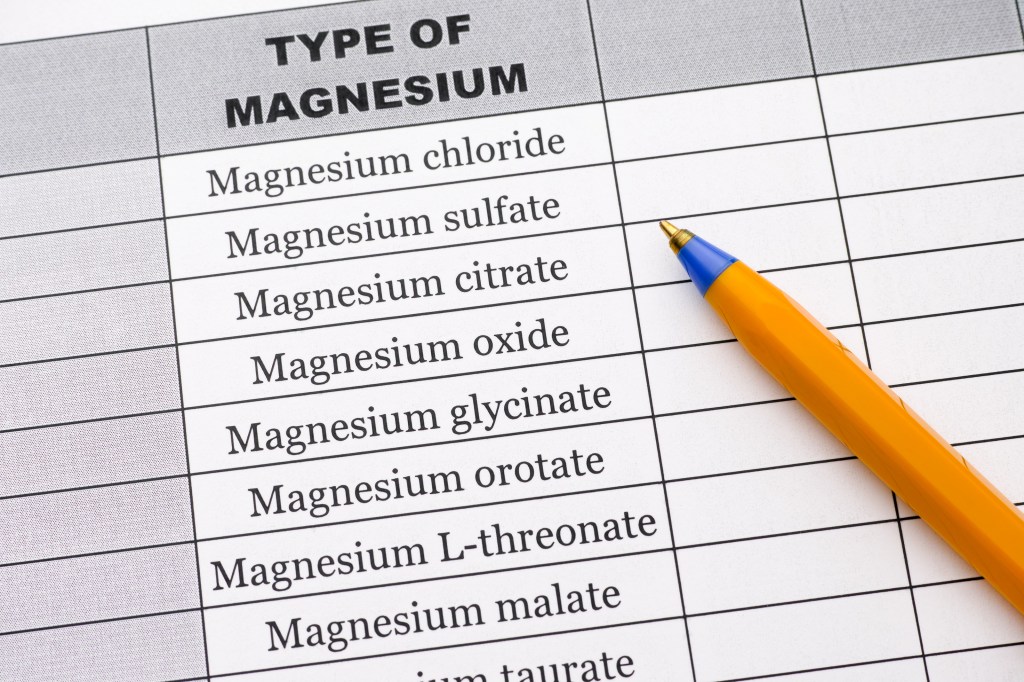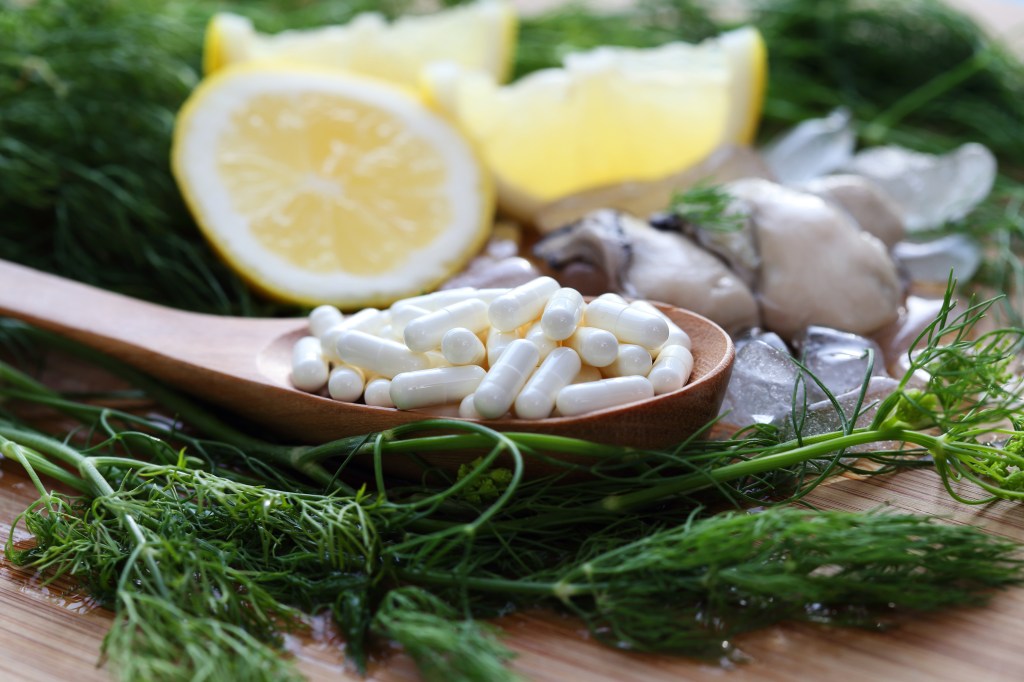At a glance
Choosing the right supplements is crucial because the quality and bioavailability of nutrients significantly impact how well they support energy production, metabolic health, and immune balance. Many products rely on poorly absorbed forms, synthetic ingredients, or isolated compounds, which limit their effectiveness. Understanding how nutrients work with natural cofactors, active forms, and proper absorption helps clarify what separates truly effective supplements from low-quality options.
Many health and fitness enthusiasts seek to support their bodies with nutritional supplements. However, with so many options available, it can be challenging to determine the best products.
Discover five supplements that can support your health and learn how to identify high-quality products that align with your nutritional goals.

Why choosing the right supplements matters
High-quality supplements can help support steady energy production, metabolic health, and immune balance when used in conjunction with a nutrient-rich diet.
However, not all supplements provide the same level of quality or efficacy, as many products contain synthetic and poorly absorbed ingredients, unnecessary fillers, or doses too small to have a meaningful effect.
Moreover, many companies produce supplements that contain single isolated compounds rather than the natural nutrient complexes that help support efficient absorption and utilization.
“In nature, nutrients never come alone–they work with cofactors and trace minerals that support efficient utilization by the body,” Dr. Berg explains. “This is why it’s crucial to understand what to look for on a product label to avoid low-quality or ineffective products.”
Ultimately, selecting supplements composed of high-quality ingredients and food-based nutrient complexes can facilitate better absorption and offer greater overall nutritional value.
Watch the video below to discover the best supplements for supporting your health.
What makes a supplement effective
A supplement’s effectiveness depends primarily on its bioavailability, which refers to how well your body can absorb and use nutrients.
Even a supplement that provides larger doses of nutrients may not offer significant benefits if the ingredients aren’t well absorbed.
One example is beta-carotene–a plant pigment often mistaken for vitamin A. In reality, beta-carotene is actually a precursor to vitamin A that must be converted and activated in the liver.
However, this conversion is inefficient in many people, and supplements and animal products that contain retinol, which is the active form of vitamin A, tend to be better utilized.
Certain nutrients also rely on cofactors, which are supportive vitamins or minerals that help activate or transport them.
For instance, fat-soluble vitamins, such as A, D, E, and K, require healthy fats for absorption, while minerals such as calcium and iron rely on vitamin D, magnesium, and vitamin C for optimal utilization.
This explains why many mineral supplements are formulated with chelated nutrients, meaning the minerals are bound to amino acids or other organic compounds that facilitate their passage into the body more easily.
In essence, nutrients in supplements work best when delivered in their active and bioavailable forms, paired with the cofactors needed to utilize them efficiently.

Top supplements that actually work
Taking the right nutrients can make a noticeable difference in energy levels, metabolic efficiency, and recovery–especially when they’re in bioavailable forms the body can recognize and use.
Here are five supplements that actually work.
1. Vitamin D3 and K2
Vitamins D3 and K2 work together to maintain calcium balance, support a strong immune system and bone health, and promote healthy blood flow and blood vessel function.
While sunlight is the most natural source of vitamin D, people with limited sun exposure may benefit from additional support to help support the body’s calcium metabolism and immune health.
A well-balanced vitamin D supplement should include vitamin K2 in a ratio of about 1000:10, or roughly 10 micrograms of K2 for every 1000 IU of D3, though individual needs may vary.
This pairing supports proper calcium metabolism, helping maintain strong bones and a healthy cardiovascular system.
Because individual needs for vitamin D and K may differ based on sun exposure, age, and lifestyle, it’s recommended to consult a healthcare provider for personalized advice before incorporating supplements into your routine.

2. Magnesium
Magnesium is a vital mineral that supports energy production, muscle and nerve function, and DNA production.
There are numerous types of magnesium supplements, but magnesium glycinate, which is bound to the amino acid glycine, stands out for its gentle effect on the stomach and efficient absorption. This helps promote steady energy and relaxation without the digestive issues linked to magnesium oxide or carbonate.
Another form, magnesium L-threonate, is unique for its ability to cross the blood-brain barrier, supporting healthy brain and nervous system function.
Research published in Sleep Medicine: X found that adults who took magnesium L-threonate for three weeks experienced measurable improvements in both deep and rapid eye movement (REM) sleep quality, as well as neuronal function and daytime alertness.

3. Betaine hydrochloride
Betaine hydrochloride (HCl) is a supplement that combines betaine, a compound naturally found in beets and seafood, with hydrochloric acid, the same acid your stomach produces to aid digestion.
Betaine is added to help stabilize HCI and improve its delivery to the stomach, since pure HCl is highly acidic and can damage the mouth and esophagus if not properly buffered.
This combination may promote digestive comfort by supporting healthy stomach acidity, which is crucial for protein breakdown, mineral release, digestive enzyme activation, and the release of bile and pancreatic fluid for nutrient absorption.

4. Coenzyme Q10
Coenzyme Q10 (CoQ10) helps facilitate cellular energy generation while supporting the body’s antioxidant defenses. It also promotes cardiovascular health and overall metabolic function.
Although the body can produce CoQ10, levels naturally decline with age and can be further reduced by stress, nutrient deficiencies, or certain medications.
Scientific studies show that CoQ10 supplementation appears to support measurable improvements in CoQ10 status and normal physiological balance.
Evidence published in Molecular Nutrition & Food Research suggests that a daily CoQ10 intake may be beneficial for supporting healthy inflammatory responses, which are associated with cellular health and energy metabolism.
Because CoQ10 is fat-soluble, it absorbs best when taken with healthy fats, and it’s recommended to opt for formulas with omega-3 fats or take them with a fat-containing meal to enhance absorption.

5. Zinc
Zinc is a trace mineral found in foods such as oysters, grass-fed beef, and pumpkin seeds. It plays a critical role in enzyme reactions related to hormone balance, protein synthesis, immune function, and tissue repair, contributing to energy and overall well-being.
While zinc can be obtained from food, research published in Nutrients suggests that zinc bound to L-carnosine–a naturally occurring dipeptide–may provide enhanced gastrointestinal support compared to other supplement forms.
L-carnosine also has anti-inflammatory and antioxidant properties, making zinc-L-carnosine a particularly supportive option for maintaining digestive integrity and overall wellness.

How to choose high-quality supplements
With thousands of options available, the quality of supplements can vary significantly among brands.
To select high-quality supplements, it’s best to focus on these five criteria.
1. Prioritize bioavailability
Choose supplements formulated with nutrients that are easily absorbed and combined with natural cofactors to support optimal utilization.
2. Look for accredited food certifications
Seek products with the United States Department of Agriculture (USDA) Organic or Non-GMO certifications, which help reduce potential exposure to synthetic additives or chemical residues that may compromise nutrient integrity.
Also consider certifications such as Current Good Manufacturing Practice (cGMP) and Halal to help ensure quality and ethical sourcing.
3. Avoid unnecessary additives
Avoid formulas containing maltodextrin, artificial sweeteners, colors, or preservatives, as these may interfere with nutrient absorption and overall health.
4. Prioritize third-party tested products
Select brands that disclose ingredient sourcing and undergo independent testing. Look for seals from organizations such as the United States Pharmacopeia (USP) or the National Sanitation Foundation (NSF) International, which help verify purity and potency.
5. Use caution if you’re in a higher-risk group
While many dietary supplements are safe for healthy adults, certain products can interact with prescription drugs or pose challenges for those with poor blood pressure regulation, blood sugar imbalances, or fluctuating hormone levels.
Certain nutrients may also be harmful in high doses, especially for older individuals or those with specific sensitivities.
If you’re pregnant, nursing, or managing a medical condition, consult a healthcare provider to ensure they’re safe and appropriate for your health goals.
Key takeaways
- High-quality supplements help support energy production, metabolic health, and immune balance, but effectiveness depends on ingredient quality, absorption, and appropriate dosing rather than label claims alone.
- Many low-quality supplements rely on synthetic, poorly absorbed nutrients or isolated compounds that lack the natural cofactors needed for proper utilization in the body.
- Supplement effectiveness is closely tied to bioavailability, meaning nutrients work best in active forms and when paired with supportive cofactors such as healthy fats, vitamins, or minerals.
FAQ
1. How do I know if a supplement is high quality?
To identify a high-quality supplement, look for brands that disclose third-party testing, avoid synthetic additives, and use bioavailable forms of nutrients and nutrient combinations.
Independent verification from organizations such as the United States Pharmacopeia (USP) or the National Sanitation Foundation (NSF) International provides additional assurance that the supplement meets standards for purity, potency, and safety.
2. Do I need supplements if I eat a balanced diet?
While a healthy diet remains the foundation of good nutrition, supplements can be an effective addition to a balanced meal plan to help maintain nutrient balance and support a healthy body.
3. How long does it take to notice results after taking supplements?
How long it takes to notice results depends on the specific nutrient and your overall health status. While supplements such as magnesium may support energy and muscle comfort within days, others, such as vitamin D3 with K2 or coenzyme Q10 (CoQ10), may take several weeks of consistent use before noticeable benefits appear.
4. What should I look for on supplement labels?
Select products that are free from artificial sweeteners and unnecessary fillers and look for recognizable ingredients and bioavailable forms of nutrients, rather than synthetic isolates.
5. Can I take multiple supplements together?
Many supplements can be taken together, especially those that complement each other, such as vitamin D3 and K2.
However, optimal dosages and combinations can vary, and it’s essential to consult a qualified nutritionist or healthcare professional for personalized guidance before making changes to your supplement routine.
6. Are protein powders good supplements for weight loss and building muscle?
While protein powders can offer potential benefits for muscle building, many products contain low-quality whey protein, filler ingredients, or added sugars that may spike blood sugar and contribute to energy fluctuations.
Sources
- https://www.sciencedirect.com/science/article/pii/S2590142724000193
- https://onlinelibrary.wiley.com/doi/abs/10.1002/mnfr.202200800
- https://pmc.ncbi.nlm.nih.gov/articles/PMC7146259/












